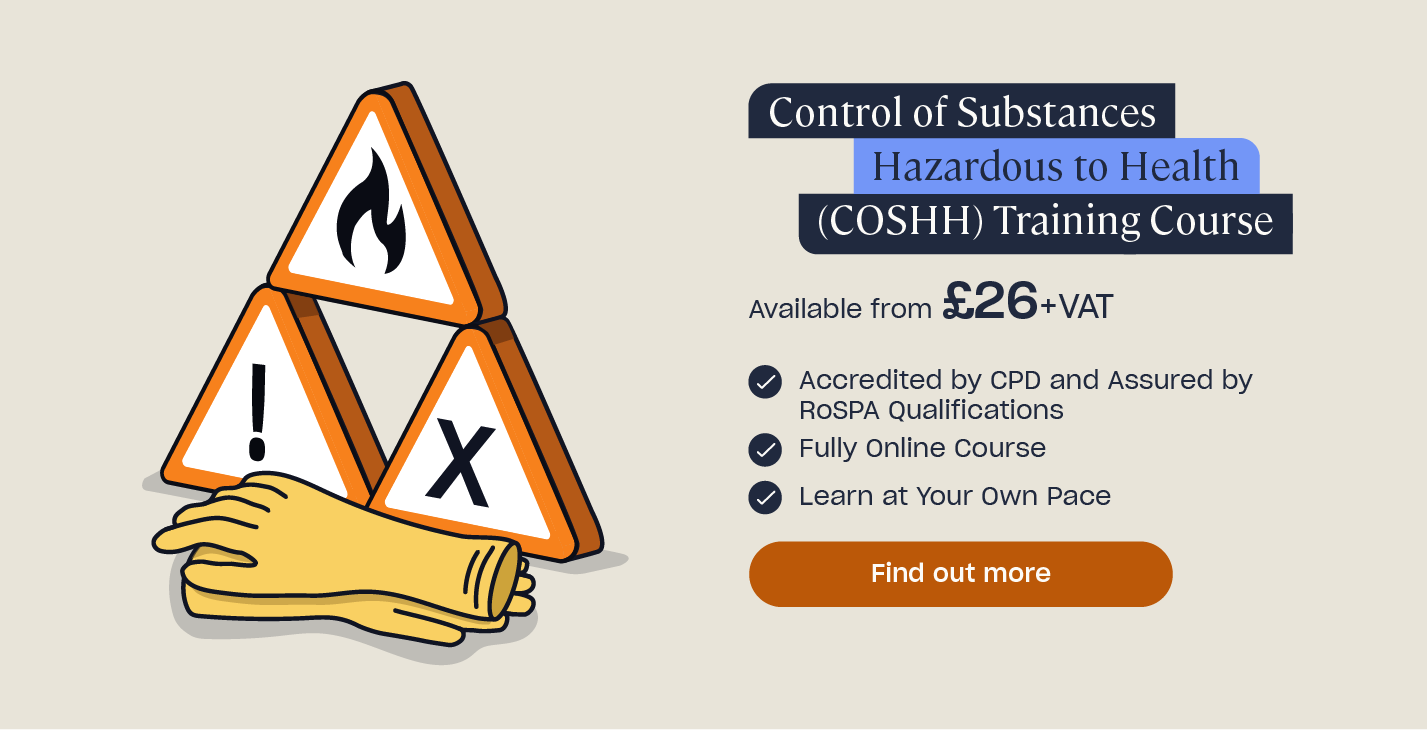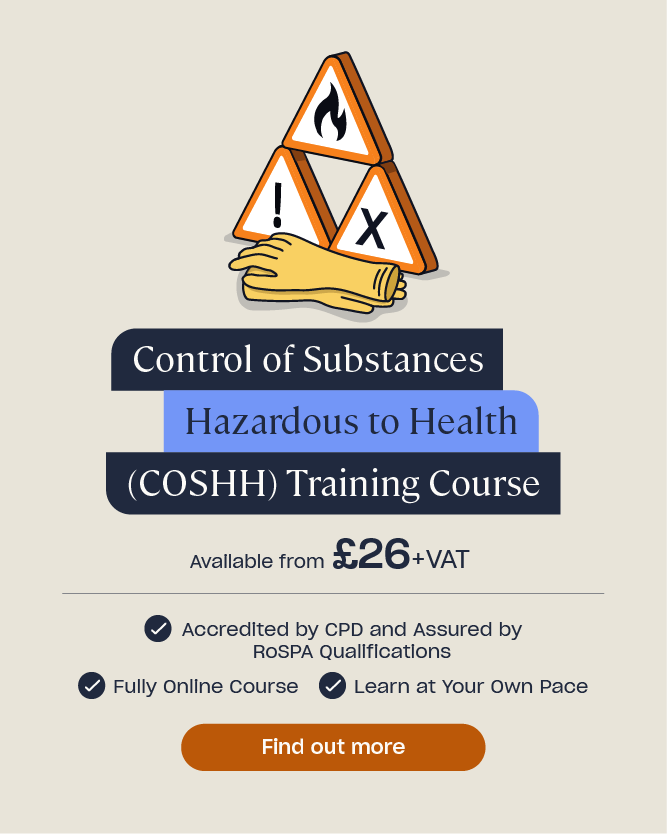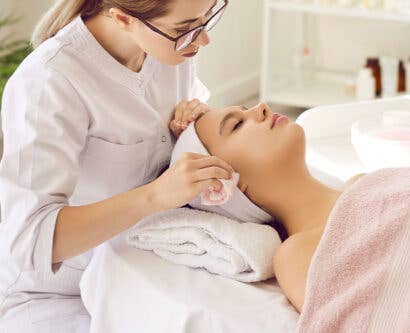Risk Assessment for Cleaning: Free Template
In order for cleaning activities to be carried out effectively and safely, employers have a legal duty to carry out a risk assessment. This ensures that potential hazards are identified, assessed, and controlled, so cleaners are kept healthy and safe while at work.
Employees who have cleaning responsibilities should be consulted during the risk assessment. They should recognise the hazards they may face while cleaning and the control measures that their employer has put in place to reduce any risk. This helps to keep everyone at the work premises safe from harm.
In this article, we outline the hazards associated with cleaning that you need to consider. We also explain how to complete a risk assessment and why this is important, and provide you with a free Risk Assessment for Cleaning Template that you can use in your cleaning business.
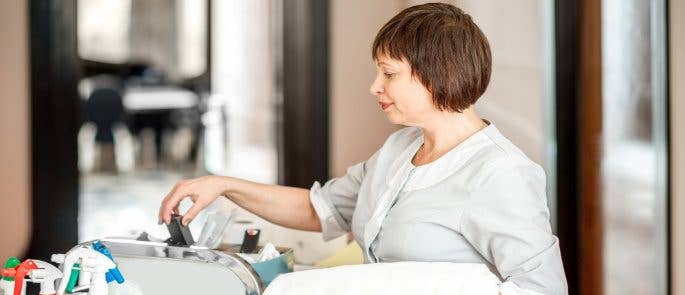
What are the Hazards Associated with Cleaning?
Cleaning activities come with many different types of hazards. Most of these hazards will depend on what is being cleaned and the environment, such as whether it is an office or a factory, for example.
Hazards associated with cleaning may include:
- The chemical products used. Often, cleaning products can be hazardous to health, either to those using them or who are exposed to them. Hazardous cleaning products can cause ill-health impacts such as occupational dermatitis (skin irritation due to the hazardous substance or through wet work), urticaria (a skin condition caused by irritation or an allergic reaction) or respiratory irritation or illnesses (such as occupational asthma).
- Dangerous equipment or machinery. Depending on the workplace being cleaned, employees may come into contact with equipment and machinery that can be hazardous. For example, a cleaner may be required to wipe down a piece of machinery that has sharp blades, which could cut someone cleaning it if precautionary measures aren’t in place. The hazard is even greater if the machine isn’t turned off, as it may just be in sleep mode and could cause a serious accident if it starts operating while someone is cleaning it.
- Electrical equipment. Though this is dependent on the type of cleaning, many activities involve the use of water, which can be dangerous if used near electrical appliances.
- Slips and trips. If cleaners need to clean floors and leave them to air dry, this may result in people slipping. A cleaner may trip if there are trailing electrical cables on the floor, such as from a hoover or office computers. This can be even more dangerous if the cleaner is carrying something, particularly hazardous cleaning materials that could then be dropped or spilt.
- Manual handling. Cleaners may need to use equipment or machines that require manual handling, such as to push a trolley containing their cleaning products and equipment. They may also be required to move objects that obstruct where they need to clean, which could be heavy and awkward to carry.
- Lone working. Cleaners may be working unsupervised and when others aren’t at the premises, such as before an office opens to staff or once a restaurant closes. This may pose a risk to them because if they have an accident while working on their own, they may not receive immediate help without sufficient emergency procedures.
While the above are common examples of hazards that cleaners may be exposed to, the hazards are always dependent on the particular cleaning task and environment in which it is carried out. The hazards present in someone’s home where a domestic cleaner is working are going to be different to those present in a factory. This is why it is important that employers carry out their own risk assessment for cleaning before any activities take place.
Need a Course?
High Speed Training offers dedicated COSHH Training For Cleaning which provides those who carry out cleaning activities the information they need to understand the risks hazardous substances can pose and how these can be controlled.
Why Should Employers Complete a Risk Assessment for Cleaning?
If you employ cleaners, or are a self-employed cleaner, then you have a legal duty to carry out a risk assessment before any work starts. The same applies if you are an external cleaning company that carries out cleaning for a client company. If this is the case, then the contract manager or employer of the cleaning company should visit the premises that are going to be cleaned and carry out the risk assessment.
Carrying out a risk assessment will ensure that cleaning hazards in the workplace, such as those explained above, are identified, assessed and controlled with sufficient measures. This will ensure that the health and safety of employees, and others who may be at the premises, is protected.
You should share the outcomes of the risk assessment with those who have cleaning responsibilities. This will help them to think about the hazards that they may be exposed to in the workplace. It will also help them understand the precautionary measures that are in place to manage this risk and the part they play in this.
Employers have the overall duty to ensure a risk assessment is carried out. They may do so themselves, or designate this to a competent person, such as a manager or senior member of staff trained in carrying out risk assessments and health and safety matters. It is a legal requirement for employers with more than five employees to keep a record of their risk assessment, but it’s good practice for businesses of any size.
Employers must carry out a risk assessment to ensure that they comply with health and safety regulations, including the Management of Health and Safety at Work Regulations 1999 (MHSWR). The Control of Substances Hazardous to Health (COSHH) Regulations also require employers to suitably assess the risks through the risk assessment process. They must use the results of this to implement appropriate control measures that protect workers and anyone else exposed to hazardous substances.
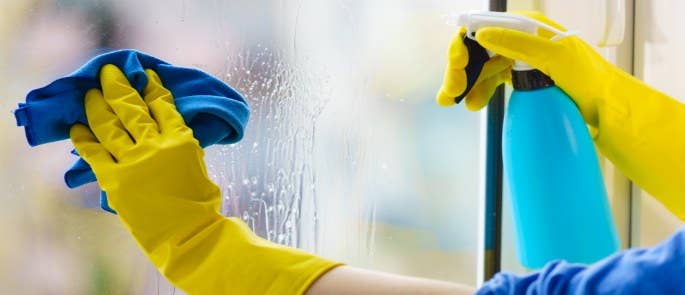
How Do the Control of Substances Hazardous to Health (COSHH) Regulations Apply to Cleaning Activities?
COSHH is the main piece of specific legislation that covers working with hazardous substances. Employers of cleaners must consider this regulation because the majority of cleaning products are classed as, or produce, hazardous substances.
In practice, this means that you must prevent your employees, as well as others who may be affected, from being exposed to substances hazardous to health. Where this is not reasonably practicable, the substances and exposure need to be adequately controlled, as will be determined in the risk assessment. You must communicate the contents of your risk assessment to those who are involved in the work processes and ensure they have suitable and sufficient information, instruction, and training to carry out their cleaning responsibilities.
You may also need to carry out a COSHH-specific risk assessment alongside your normal risk assessment. This is necessary where there are a number of hazardous substances present in a workplace or where there is a complex process. However, for many normal work activities, the overall workplace risk assessment that considers the specific hazards for your workplace should be sufficient, provided that it contains the actions to be taken for any hazardous substances used.
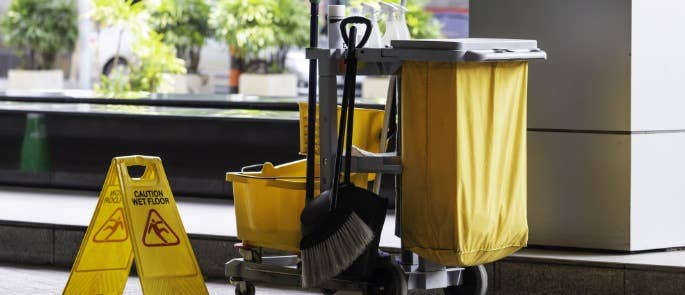
How Do I Complete a Cleaning Risk Assessment?
Carrying out a risk assessment for any environment or work activity involves considering what might cause harm to people and deciding what controls are needed to prevent or control that harm. Remember that risk assessments must be completed prior to the worker commencing their cleaning activities.
To carry out a cleaning risk assessment, you need to follow the five key steps set out by the Health and Safety Executive (HSE):
- Identify the hazards.
- Determine who might be harmed and how.
- Decide what measures are needed to control the risks.
- Record your findings.
- Regularly review the risk assessment.
Step 1: Identify the Hazards
The first step in the risk assessment requires you to identify any potential hazards in the workplace or those caused by work activities. For cleaning, this includes the hazards explained at the beginning of this article. For example, the cleaning products used, slips and trips, and dangerous machinery. To identify these, you should walk around the workplace and consider what could cause harm (potential hazards).
This involves thinking about:
- The work activity and how equipment is used.
- The cleaning chemicals and substances used.
- Any safe or unsafe work practices.
- The general state of the workplace.
You should also consult records of past accidents and ill health records to help you to identify any less obvious hazards.
Step 2: Determine Who Might Be Harmed and How
Once you have identified hazards, you must then assess the risks and determine who might be harmed and how.
Where applicable, you should consider:
- All members of your cleaning staff at the workplace.
- Other people working at the premises. For example, if undertaking commercial cleaning, those who work at the office or other premises that are being cleaned.
- Members of the public who are visiting, such as a shop or supermarket.
- Contractors, maintenance workers and people making deliveries.
- Private individuals in their own homes while cleaning activities are going on.
- Temporary workers and part-time workers. They will need further consideration, as they are likely to have less knowledge of the conditions in your particular workplace or any new changes that are made.
Step 3: Decide What Measures Are Needed to Control the Risks
Once you have identified the hazards and determined who may be harmed by them and how, you must decide what can be done about the hazards. This involves thinking about how each hazard could cause harm and what control measures are needed to eliminate or reduce the risk.
You should consider:
- Can I remove the hazard altogether?
- If this isn’t possible, how can I control the risk so that harm is reduced or unlikely?
For example, you may be able to eliminate the risk entirely by substituting hazardous substances for ones that are non-hazardous or less hazardous. Another example would be to provide cleaners with protective gloves when they need to handle cleaning chemicals.
Step 4: Record Your Findings
As we have mentioned, it’s a legal requirement to record the results of your risk assessment if you employ more than five people. However, it’s good practice for businesses of any size. You must be able to show that you have properly assessed the hazards and risks, considered individuals who may be affected, and dealt with all the obvious significant hazards.
You can use our Risk Assessment for Cleaning Template below to record your findings.
Step 5: Regularly Review the Risk Assessment
The final step of the risk assessment requires you to check on a regular basis whether there have been any changes in the workplace that may affect the risk assessment.
For example:
- Have you introduced any new cleaning equipment or products into the workplace?
- Has anyone’s working hours changed and resulted in lone working?
- Have you asked for employee feedback?
- Are there new employees, including part-time and temporary workers, who require information, instruction or training?
You should review your risk assessment if any changes occur that may affect the risk assessment. If no changes occur, it is recommended that you review your risk assessment at least once a year. You must record any changes in the risk assessment and fully train your employees on them.
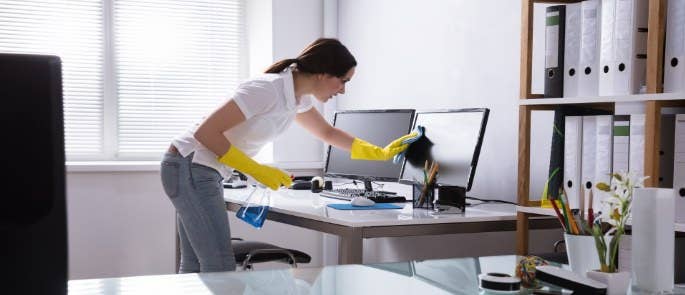
Free Risk Assessment Template for Cleaning
To help you produce an effective risk assessment for cleaning, we have created a template that you can use at your workplace. All risk assessments need to cover the same five steps that we have discussed in this article, though the results will vary depending on the environment and the work activities that take place. This means it can be used for any type of business that carries out cleaning activities.
As well as our Risk Assessment Template for Cleaning, we have also created an example Risk Assessment for Cleaning PDF to demonstrate how you should fill it in. You can either print out the template and fill it in, or save a copy and do so online if you want to. Remember, it is ultimately the employer’s legal duty to ensure that a risk assessment is carried out and to record the results, though they may designate the task of carrying it out to a competent person on their behalf.
Further Resources:
- What is COSHH Training and Why is it Important for Cleaners?
- What are High Touch Surfaces and How Should You Clean Them?
- How to Start Your Own Cleaning Business
- Risk Assessment Quiz
- What are the Six Stages of Cleaning?
- Restaurant Cleaning Schedule Template


